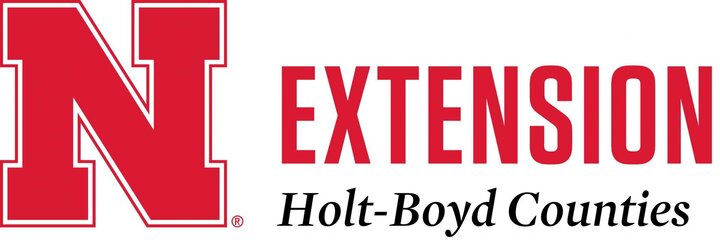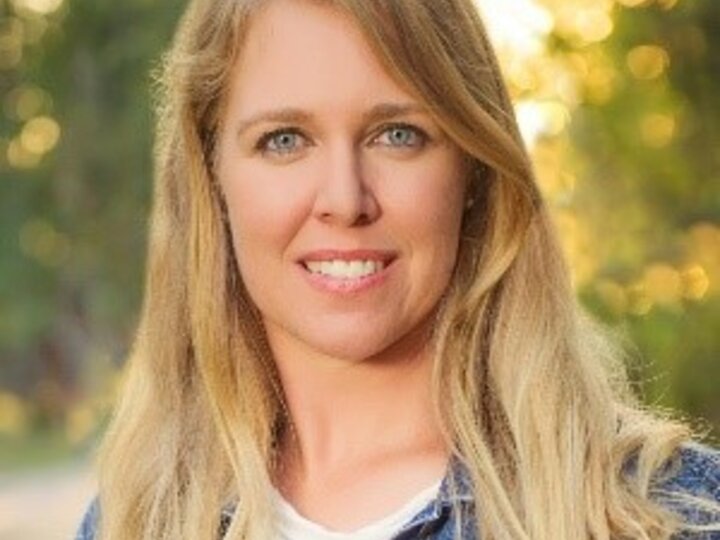
Nebraska Extension Educator - Holt & Boyd Counties - LaDonna Werth
Nebraska Extension Educator - Holt & Boyd Counties - Amy Timmerman
Nebraska Extension Educator - Holt, Boyd, Garfield, Loup, & Wheeler Counties - Bethany Johnston
Nebraska Extension Educator - Brown, Rock, & Keya Paha Counties - Brittany Spieker
Nebraska 4-H Assistant - Holt & Boyd Counties - Debra Walnofer
Sep 13-14: Nebraska State 4-H Shotgun Championships, 8am – 6pm, Heartland Public Shooting Park, Alda, NE; For more information: https://sites.google.com/view/nestateshotgun/home
October 1: ServSafe Manager Training, 8:30am-6:00pm, Hall County Extension Office, Grand Island, NE - https://events.unl.edu/hall-county/2025/10/01/190088/
October 1: Knowing, Growing, and Grazing Grass Registration Deadline, Register at: go.unl.edu/knowing_grass
October 4: Nebraska 4-H Shooting Sports Instructor Initial Workshop, 8:00am-6:00pm, Panhandle Research Extension Center, Scottsbluff, NE - https://events.unl.edu/NE4H-Shooting-Sports/2025/10/04/189870/
October 4: Nebraska 4-H Shooting Sports Instructor Update Workshop, 9:00am-12:00pm, Panhandle Research Extension Center, Scottsbluff, NE - https://events.unl.edu/NE4H-Shooting-Sports/2025/10/04/189872/
October 5: Nebraska 4-H Shooting Sports Instructor Initial Workshop, 8:00am-12:00pm, Panhandle Research Extension Center, Scottsbluff, NE - https://events.unl.edu/NE4H-Shooting-Sports/2025/10/05/189871/
October 11-12: Nebraska 4-H Shooting Sports Instructor Update, 9:00am-12:00pm, Ashland Gun Club, Ashland, NE - https://events.unl.edu/NE4H-Shooting-Sports/2025/10/11/188974/
October 11-12: Nebraska 4-H Shooting Sports Instructor Training, 8:00am-6:00pm, Ashland Gun Club, Ashland, NE - https://events.unl.edu/NE4H-Shooting-Sports/2025/10/11/188969/
October 13-30: Knowing, Growing, and Grazing Grass Webinar Series, Monday and Thursday evenings, 7:30pm-8:45pm CT, go.unl.edu/knowing_grass
Homework: Too Much or Not Enough
The mothers in my office do not look forward to the starting of school because of the busy balance of homework, music lessons, other after-school activities, and sports activities. But as students head back to school it is definitely time to think about homework. Here is the cycle: teachers assign and grade it; parents remind their students about it and maybe assist with homework; teenagers especially complain about it, enjoy it or forget it, and maybe complete it. Researchers agree that homework is an essential ingredient of a student's school success.
How much time is being spent on homework?
A recent study found that students in middle and junior high school spend about 45 minutes while elementary school students on the average spend about 35 minutes on homework. Another study had another tale to tell, 41% of elementary school students and 37% of middle/junior high students do not do any homework on a typical day. This second study showed that on the average, elementary school students spend 63 minutes on homework, and the middle/junior high students spend 77 minutes per day.
Who does homework?
Seventy-five percent of students whose mothers had a college degree do homework, versus 49%-59% for students whose mothers have less education. Private school students (87%) are more likely to spend some time doing homework than those in public school (58%).
LaDonna Werth
Extension Educator
Phone: 402-336-2760
E-mail: lwerth2@unl.edu

How much is too much-and how much is not enough?
Doing little or no homework in school can have negative long-term effect on children. Recent media attention suggests that many American children are spending too much time completing homework assignments. This may be true for some students in this country. However, cross-cultural comparisons reveal that American children complete much less homework than children in other countries, such as Japan and Tawain.
It is critical to examine homework time in the relationship of students' after-school activities, as well as leisure activities such as watching television. Many children do no homework because their after-school time is consumed by other activities, such as sports teams and music lessons. Homework may act as an additional stressor in the student's busy life as well as their parent. On the other hand, students who do little or no homework may be participating more in passive leisure activities, like watching television. Parental monitoring is the key in determining how homework fits in the balance of family life.
Homework can enhance learning and achievement and develop independent work and study habits. Teachers and parents should try to be sensitive to the multiple demands on the students' time, while at the same time recognizing the potential benefits of homework.
Source: University of Nebraska Cooperative Extension, The Ups & Downs of Adolescence, Homework-Yuck! August 2000. Mary Gosche, Human Development Specialist, Cape Girardeau County and Southeast Region, University of Missouri Extension
Don’t Wait for Spring: Why Fall Is Prime Time for Weed Control
Tips for Targeting Perennials, Biennials, and Winter Annuals in Rangeland and Pasture
As the growing season winds down and pastures go dormant, weed management might not be top of mind - but fall can be one of the most effective times to control some of our toughest rangeland invaders.
Fall offers a window of opportunity, especially for targeting perennial and biennial weeds. Understanding which species respond best to fall control and how weather affects treatment success can help improve rangeland productivity and reduce weed pressure heading into next spring.
Why Fall Matters for Weed Control
In the fall, perennial and biennial plants shift energy reserves into their roots to prepare for winter. This makes systemic herbicides more effective - when absorbed by the foliage, they’re carried down into the root system, delivering a more complete kill.
Species that are actively growing at this time - often cool-season broadleaf perennials or rosetted biennials - are particularly vulnerable. Controlling them now reduces their ability to overwinter and come back stronger next year.
Weeds to Target in the Fall
Fall is a good time to scout for and treat species like:
Amy Timmerman
Extension Educator
Phone: 402-336-2760
E-mail: atimmerman2@unl.edu

Tricky Perennials:
Canada thistle – Fall is one of the most effective times to control this persistent perennial, especially after a light frost but before a hard freeze. Systemic herbicides like clopyralid or aminopyralid are commonly used and most effective when plants are actively regrowing.
Leafy spurge – This deep-rooted perennial is difficult to control, but fall can be a good time to target regrowth following grazing or mowing. Look for fresh leafy shoots and treat before a hard freeze to ensure uptake. Picloram is often the most effective option, especially when combined with 2,4-D. Aminopyralid also provides control and may be preferred in sensitive areas due to lower residual risk.
Biennial Invaders:
Musk thistle – In the fall of its first year, musk thistle forms a flat rosette close to the ground. This stage is ideal for control with herbicides such as 2,4-D, dicamba, or aminopyralid. Spot spraying rosettes is both cost-effective and highly successful.
Common mullein – Like musk thistle, mullein is a biennial that forms a woolly rosette in the fall. This stage is ideal for control, but its fuzzy leaves can limit herbicide uptake. Metsulfuron and picloram are the most effective options, especially when mixed with a surfactant. Fall applications before bolting provide the best long-term suppression.
Buckbrush and smooth sumac: These native shrubs can spread aggressively in pastures and hay meadows. Both respond to fall herbicide applications when green foliage is still present. Herbicides like triclopyr or combinations with dicamba or picloram can be used, but timing is critical—apply before leaf color change. Mechanical control (mowing) earlier in the season can increase herbicide effectiveness by stimulating regrowth.
Winter annuals: (e.g., downy brome, henbit, prickly lettuce) – These species germinate in the fall and overwinter as small rosettes or seedlings. Fall herbicide applications can be effective if applied after emergence but before a hard freeze, especially when paired with products that provide residual activity to control additional flushes. This is particularly helpful in reducing early spring weed pressure in pastures and meadows.
What Not to Treat in Fall
Some weeds are poor candidates for fall herbicide control:
Summer annuals (e.g., foxtail, pigweed, kochia) – These species have already completed their life cycle by fall and have typically set seed. Spraying at this stage offers no long-term benefit and is a waste of time and money.
Timing Is Everything
The ideal timing for fall herbicide applications is late September through early November, depending on your location in Nebraska. Focus on:
Target actively growing plants – Weeds must have green, photosynthesizing tissue to absorb herbicides and translocate them to the roots. Apply before leaves begin to yellow or drop; once plants enter dormancy, control becomes ineffective.
Apply well before a hard freeze – Herbicides need 7–10 days of warm conditions after spraying to move into the root system. While a light frost may improve uptake, a hard freeze (28°F or lower) halts translocation. Don’t spray within a few days of a killing frost.
Avoid cold snaps and drought-stressed plants – Choose periods with several days of daytime highs above 50°F to ensure plant activity. If weeds are wilted or not regrowing after grazing or mowing, delay treatment until conditions improve.
Spot-Treat and Record
Rather than spraying whole pastures, fall is a great time to walk or drive your rangeland and flag problem patches. Spot treating rosettes or patches of leafy spurge and thistles with a backpack or ATV sprayer can be far more cost-effective and environmentally responsible than blanket applications.
As you treat, take a moment to record what you sprayed, where, and when. Using maps, photos, or GPS pins to track infestation areas will help you evaluate success and plan next year’s weed control strategy. If the same patches keep popping up, you’ll know it may be time to adjust products, timing, or tactics.
Bottom Line
Fall has plenty to keep us busy, but don’t overlook the chance to set your pastures up for success next spring. Targeting perennial and biennial weeds while they’re vulnerable in the fall can reduce herbicide use long-term and boost forage productivity. While it may not replace all spring and summer efforts, fall control can dramatically reduce pressure from some of our most persistent species.
For help identifying weeds or selecting the right herbicide for your operation, reach out to your local Extension educator.
Source: Ben Beckman - Nebraska Extension Educator, Ryan Benjamin - Nebraska Extension Educator (CropWatch – September 1, 2025)
Depreciation and Opportunity Interest are Large Cow-calf Costs with Today’s Market Prices
The recent sharply higher prices have been a financial benefit for those owning cows. Being able to capitalize on increasing calf prices and to sell a weigh-up cow for more than it costs to develop or purchase has made for excellent times financially for cow-calf producers.
However, the recent increase in price has also drastically increased two hidden, non-cash costs that impact a cow-calf producers’ cost of production. These two costs, which are especially pronounced in today’s current market environment, are depreciation and the opportunity cost of interest on the market value of the cow.
Depreciation is a non-cash expense that producers will not receive an invoice for, but it is a real cost! Unless the rocket like trajectory of the cattle prices continues, which historically seems unlikely, prices will eventually moderate and decline. Even if market prices remain steady, the current price structure for cows has drastically increased cow depreciation and the opportunity cost of interest on cow value.
To put this in perspective, consider that a $4,000 bred heifer today will become a $2,000 weigh-up cow at current market prices. (If weigh-up prices decline in the future the bred heifer purchased now will be worth even less when she leaves the herd.) If that bred heifer is in production for five years before it leaves the herd, exceeding the industry average, the annual depreciation is $400,
Bethany Johnston
Extension Educator
Phone: 402-336-2760
E-mail: bjohnston3@unl.edu

excluding any death loss. The cow that dies is fully depreciated as it has zero value when it leaves the herd. Assuming an average cow value of $3,000 over its productive life, with a 2% death loss per year, the annual cost is $60 per cow per year. Cow death loss, plus depreciation, totals $460 per year for each of the five years that the cow is expected to be in production.
Consider also the opportunity cost of interest on the asset value of the cow. For the sake of this example, an interest rate of 6% is used which is midway between what a producer could expect to get in terms of return on investment if the money were placed in a certificate of deposit at 4%, and the cost of borrowing money at 8% to purchase the cow. If opportunity cost is calculated, assuming an average cow value of $3,000 per year at an interest rate of 6%, this is $180 per year.
Combining the $180 of opportunity cost of interest on the average cow market value together with the $460 of cow depreciation, results in a total of $640 per cow per year. If the cows wean on average an 88% calf crop per cow exposed to breeding, this is $727 per calf produced in depreciation and opportunity cost! If the producer receives an average of $420/cwt for weaned calves with an average calf weight of 525 pounds ($2,205/head), one third of total revenue generated would be needed to cover cow depreciation and opportunity cost.
The cow-calf producer will not get a physical notice for either cow depreciation or the opportunity cost of interest. However, depreciation is the value that is being lost as the cow eventually ages out of the herd, dies and/or as market prices decline. Opportunity cost is the expected return on the capital invested in the cow that could have been generated from an alternative investment.
Things for a cow-calf producer to ponder under current market conditions:
Recognize the different categories of cost economically that are in unit cost of production for a cow-calf enterprise, including both depreciation and opportunity cost of interest on cow value.
Understand how increasing cow prices impact the economic cost of producing a pound of weaned calf.
Consider ways to get replacement cows into the herd at a lower cost and capture higher prices for cows when they leave the herd to reduce depreciation costs.
Recognize that home raised replacements likely don’t cost $4,000 to produce, but this is their market value, and they could be sold to someone else at that price.
Evaluate ways to capitalize on cow value. All income from home raised cows held for more than two years are taxed at a capital gains rate when sold. Financially these sales can have significant tax advantages as there is no self-employment tax on this income. Capital gains income is also taxed at a lower rate when compared to ordinary income, such as that from calf or yearling sales.
Cow-calf producers who recognize the economic cost of both cow depreciation and opportunity interest have taken the first step needed to address it. Once a producer sees the significance of these costs, they can then begin to consider what opportunities are available to reduce them.
Source: Aaron Berger - Nebraska Extension Educator (BeefWatch – September 1, 2025)